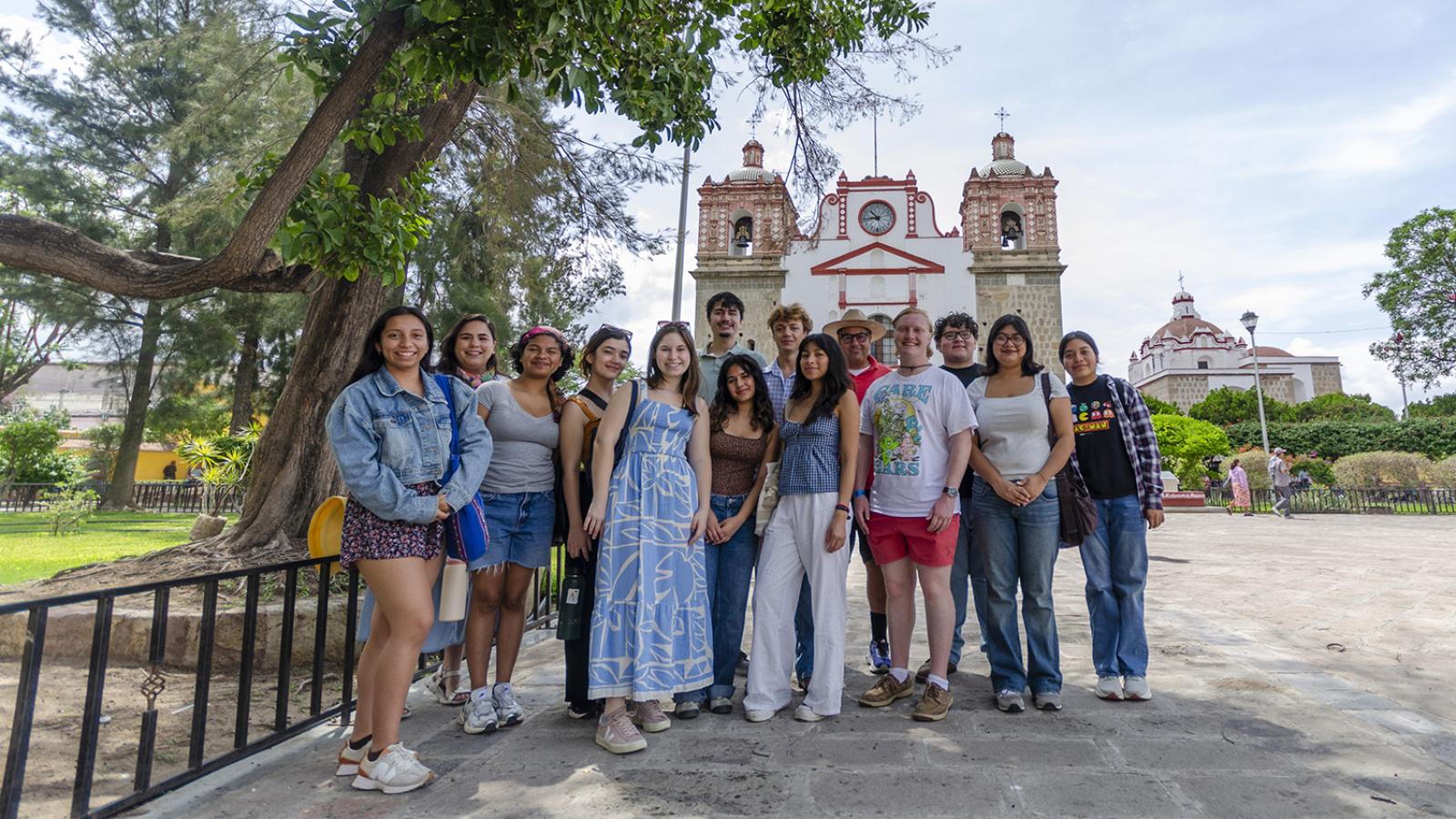Fernando Lozano, Morris B. And Gladys S. Pendleton Professor of Economics, has taught economics at Pomona for 20 years. But this summer was his first time teaching the subject in Spanish, his native language, sharing the experience with 12 Pomona students.
Lozano, along with Karla Cordova, visiting assistant professor of economics, and the students traveled to Oaxaca and Mexico City for 20 days as part of Pomona College’s third Global Gateways program, a key strategic initiative for the College. The students were enrolled in the course Historia Económica de México (Economic History of Mexico), co-taught by Lozano and Cordova.
“I grew up in Mexico, but most of my schooling as an economist was in the United States,” says Lozano. “I was motivated by the idea of immersing myself as an economist in Mexico, to teach in Spanish and to show to my students that Spanish is as much an academic and intellectual language as English.”
The students who applied for the program shared Lozano’s enthusiasm for a faculty-led experience abroad. Mariela Tamez-Elizondo ’27, who hails from San Juan, Texas, says that as soon as Lozano told her about the possibility of the trip, she was eager to go.
“I was excited because my family is from Mexico, and I was really excited to have a class in Spanish,” she says.
Students in the class read and discussed articles, all in Spanish, to understand how Mexico has developed economically, looking at five historical eras starting from pre-colonization to the early 20th century. Visits to museums, historical landmarks and archaeological sites animated each time period and brought to life their distinct characteristics.
“Teaching an economic history class is something that I always wanted to do,” says Cordova, “but I never expected it would happen in Mexico, seeing the places and being in the space where things happened.”
Lozano and Cordova especially wanted to expose students to the art of Mexico as a means to understand the country’s history and to complement the classroom learning. In Mexico City, students spent time at the Frida Kahlo Museum, National Museum of Art, and Museum of Modern Art.
“Art expresses the time, the place and the situation in which it was produced,” says Lozano. “The art is telling the story, and you can see the changes with different regimes.”
Tamez-Elizondo, an art major and economics minor, found the museum visits deeply meaningful.
“In a U.S. context, you learn mostly about American artists,” she says. “It was so important to see pieces of art of Mexican artists up close and to know that, as a Mexican woman, I could also paint and contribute to my community.”
Meetings with historians, economists and business leaders rounded out the program.
For Andrew Shelton ’27, an international relations major from Lamar, Missouri, the class appealed to his goals of broadening his worldview and learning another language in college.
Having completed fourth-semester Spanish at Pomona, Shelton says that the trip afforded him the opportunity to “not only practice Spanish but to get an understanding of the culture.” Honing his Spanish happened during class time as well as a homestay in Oaxaca, which he says was his “number one highlight” of the trip.
For heritage speakers, the experience was also a linguistic boost. “Spanish is my native language,” says Tamez-Elizondo, “but I had never done anything academic with it. A whole class is very different than just talking conversationally.”
Student participants say they are walking away with not only improved Spanish skills but a broad interdisciplinary understanding of Mexico beyond its economics.
“My perspective on this key trade partner, this key cultural relationship we have with Mexico—I have so much more context now,” says Shelton. “I feel more confident in my understanding of Mexico’s history and where it finds itself today.”
Watch a short highlight video of the trip made by Tamez-Elizondo.
